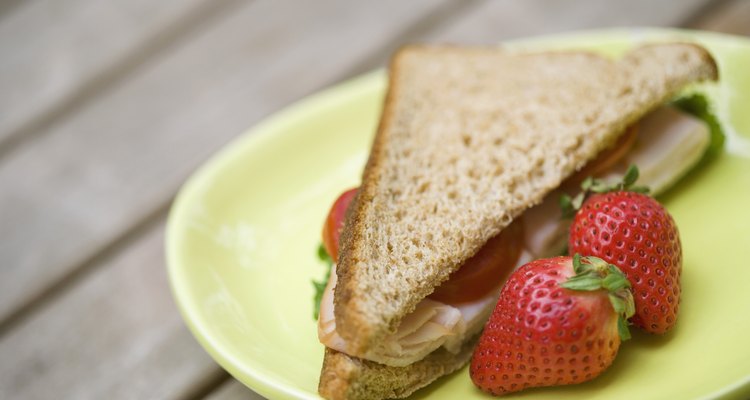
Jupiterimages/Stockbyte/Getty Images
Potato bread may consist of wheat or all-purpose flour, but some of the flour is replaced with potato flour, potato flakes or even mashed potatoes. The addition of potatoes boosts the protein and fiber above the amount in white bread. Wheat and potato breads have close to the same amount of calories and nutrients.
Comparable Macronutrients
Potato bread contains a few more calories, protein, total carbs and fiber than wheat bread, but most of the differences between the two breads are too small to worry about. One slice of wheat bread has 78 calories and 3 grams of protein, compared to 85 calories and 4 grams of protein in one slice of potato bread, according to the U.S. Department of Agriculture. You’ll get 14 grams of total carbs from a slice of wheat bread and 15 grams from potato bread. Potato bread supplies 2 grams of fiber, which is double the amount of fiber in a slice of wheat bread. Both types of bread have just 1 gram of fat per slice.
Essential Minerals
The only significant difference between wheat bread and potato bread is the amount of potassium they contain. One slice of potato bread has 230 milligrams of potassium, which is four times more than wheat bread. Wheat bread has 151 milligrams of sodium in one slice, which is only slightly more than the 120 milligrams in potato bread. Those values represent 8 to 10 percent of the recommended daily intake for sodium of 1,500 milligrams, according to the Institute of Medicine. Both types of bread have about 1 milligram of iron and a small amount of calcium and zinc.
B Vitamins for Metabolism
Each type of bread contains the same B vitamins, but in different amounts. Wheat bread is a good source of thiamin and niacin, supplying at least double the amount in potato bread. Potato bread has almost twice the folate as wheat bread, providing 48 micrograms in one slice, or 12 percent of the recommended dietary allowance of 400 micrograms. One slice of wheat bread has three times more riboflavin, while potato bread has double the amount of vitamin B-6, but they only provide a small amount of both vitamins.
Watch for Added Sugar
Wheat and potatoes contain a small amount of natural sugar, but many brands of bread have sugar added during processing. If the list of ingredients includes any sugary sweetener, such as honey, sugar and corn syrup, then your bread has added sugar. One slice of potato bread has 4 grams of total sugar. The total includes all of the natural and added sugars, so you won't know exactly how much is added. But if all 4 grams represented added sugar, it would be the equivalent of 1 teaspoon of granulated sugar. One slice of wheat bread has half the amount of sugar in potato bread.
Related Articles
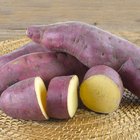
Difference in Sugar Content of Sweet ...
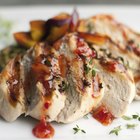
Nutritional Information on Turkey vs. ...

Nutritional Value of Red-Skin Potatoes

The Calories in Jacket Potatoes With ...
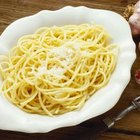
Foods to Avoid With High Carbs

Do Fresh Oranges Have a Lot of Sugar in ...

The Average Weight of a Boiled Egg
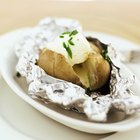
Do Baked Potatoes Have a Lot of Fiber?

How Many Calories Is Wheat Toast?

The Calories in a McDonald's Egg Biscuit

How to Make Toasted Bread Sticks With ...

Potato Skins Nutrition Information

How to Cube Potatoes

How to Cook Potatoes for Eight Hours in ...

Nutrition in Carob Vs. Chocolate
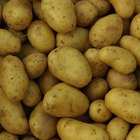
How to Make a Complete Protein With a ...

What Are the Differences Among 24K, 22K ...
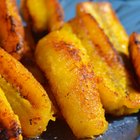
How to Cook Plantains So You Don't Have ...

How to Freeze Brioche
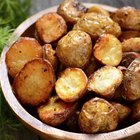
Iodine & Potatoes
References
- U.S. Department of Agriculture Nutrient Database: Bread, Wheat
- U.S. Department of Agriculture Nutrient Database: Bread, Potato
- U.S. Department of Agriculture Nutrient Database: Sugars, Granulated
- American Heart Association: Sugars and Carbohydrates
- U.S. Department of Agriculture Nutrient Database: Bread, White, Commercially Prepared (Includes Soft Bread Crumbs)
Writer Bio
Sandi Busch received a Bachelor of Arts in psychology, then pursued training in nursing and nutrition. She taught families to plan and prepare special diets, worked as a therapeutic support specialist, and now writes about her favorite topics – nutrition, food, families and parenting – for hospitals and trade magazines.
Photo Credits
Jupiterimages/Stockbyte/Getty Images